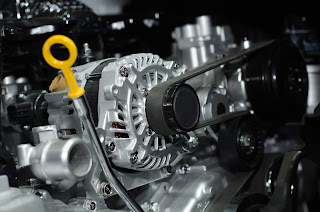While it’s been cold recently in the Orlando area, it’s not
likely that you’ll experience things like freezing fluids and car failure as a
result of the cold. Bundling up is still essential, but your car will survive
the night out in the cold and likely won’t need to be winterized to prevent
winter auto service incidents. However, if you’re venturing into colder territory
for a vacation, it pays to know just how much the cold weather can affect your
ride. Before you go out in the cold, be sure to consult this guide from Toyota
of Orlando to see which kind of winter auto service issues you could run into.
Thickening fluid
To keep your Orlando Toyota
vehicle running efficiently, fluids are pumped throughout the engine compartment
and to different components throughout your drive. But, the fluids in your vehicle
can be susceptible to freezing if left unchecked. To avoid this winter auto service
issue, make sure to have your fluids checked before venturing into an area of
low temperatures. Having them replaced and/or filled to the appropriate levels
and starting your vehicle ten to fifteen minutes prior to driving.
Tire pressure drops
Have you ever walked out, started
your car, and your tire pressure warning light comes on? A common winter auto service issue that occurs when the temperature drops is a drop in your Orlando
Toyota tire pressure. Be sure to inspect your tires for any punctures and
reinflate them before driving on an extended commute.
Leaking
Because of the frequent temperature
fluctuations in your Orlando Toyota engine compartment, a winter auto service
issue that can arise is leaking. The majority of the undercarriage and other areas
of your vehicle are made of metal and plastic and condensate easily because of
the cold exterior temperatures combined with the hot temperatures of the engine.
The changes in temperature can cause leaks to occur and ruin your ride before
you dig your car out of the snow.
Drained battery
There’s nothing worse than trying
to warm up your car during the winter and the engine can’t turn over. When the
temperatures drop, this winter auto service issue can arise. This is caused by
a reduced starting capacity in the Orlando Toyota car battery that makes it
difficult for the engine to start. Our auto service experts highly recommend
replacing your battery if it’s between four and five years old to avoid a
failed start-up.
Corrosion
While this isn’t necessarily caused
by the cold, road salt is often used to make roadways less slippery if it snows
up north. For those Orlando residents that are unfamiliar with the affects of
road salt, it can cause corrosion to the undercarriage and brakes. To avoid the
severe winter auto service issues corrosion can cause, make sure to clean your
vehicle after venturing into areas
where salt is used on roadways.
Still have questions about how cold weather can affect your
vehicle? Give Toyota of Orlando a call! Our winter auto service experts can
help you prepare your ride for the cold at an affordable price. Give us a call
at (407) 298 – 0001 today!




